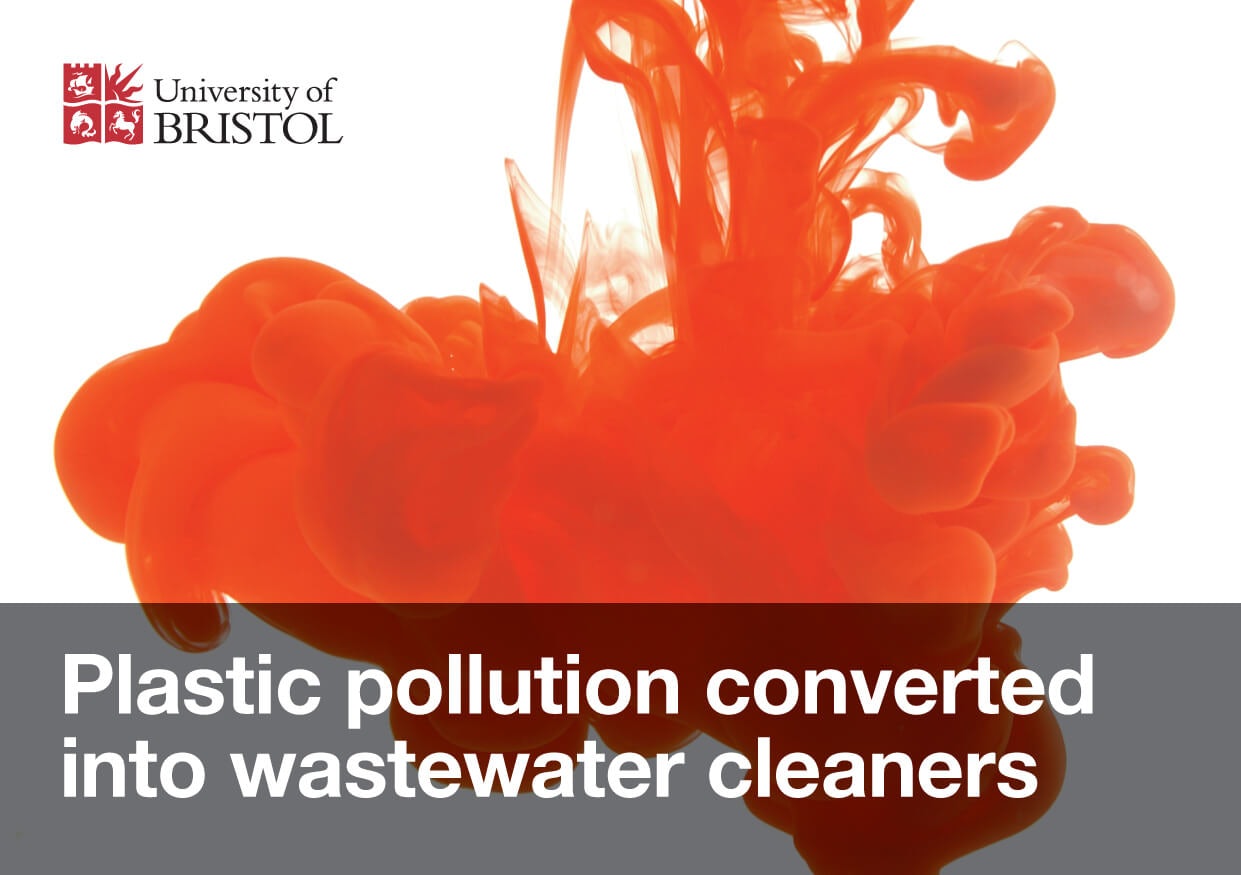Plastic Pollution Converted into Wastewater Cleaners
Global municipal waste is projected to continue its alarming upwards trajectory, with over 2.2 billion tons of solid waste expected to be generated annually by 2025.
Now that the economic, environmental and social consequences of poor waste disposal are being increasingly acknowledged, over the last decade we have seen a more concerted effort towards the possibility of a circular economy for waste – a model where all material is recycled in a continuous loop. As the worldwide exemplar for unsustainable, unnecessary and environmentally damaging materials, plastic is understandably the focus of many of these initiatives. Therefor it’s unusual that one project currently undergoing research in Bristol, is using plastic to facilitate water treatment, as opposed to targeting it.
University of Bristol’s School of Chemistry, in collaboration with Paraba State University, Brazil, is investigating the possibility of converting plastic pollution into a means of breaking down harmful synthetic dyes found in waste water. These toxic dyes, typically originating from clothing, are recognised as carcinogenic and have proved incredibly hard to clean. However, according to the team, the solution to this problem can be found in polystyrene (used predominantly for packaging, as well as disposable cutlery and dinnerware). The proposed method consists of freezing polystyrene and then expanding it to a state where it can sustain nanoparticles. Once solid, it can then be introduced to water which has been contaminated with the dyes, where it will begin to eliminate them.
Julian Eastoe, a professor at Bristol University, commented on the duality of the research project: “Our study both looks at the reuse of plastic to make a new material and the use of this material to tackle water pollution from dyes. This breakthrough will be of interest to water companies worldwide and the next stage will be to see how it might clean-up other pollutants.”
This project is particularly attractive to Dashboard, not only for its capacity in mitigating further environmental impact, but as an innovative means of reversing existing contamination- both of which will be required in ensuring a green and sustainable future.
